Designs for the frontier future
How we rebuilt the Microsoft 365 Copilot app for a new kind of productivity
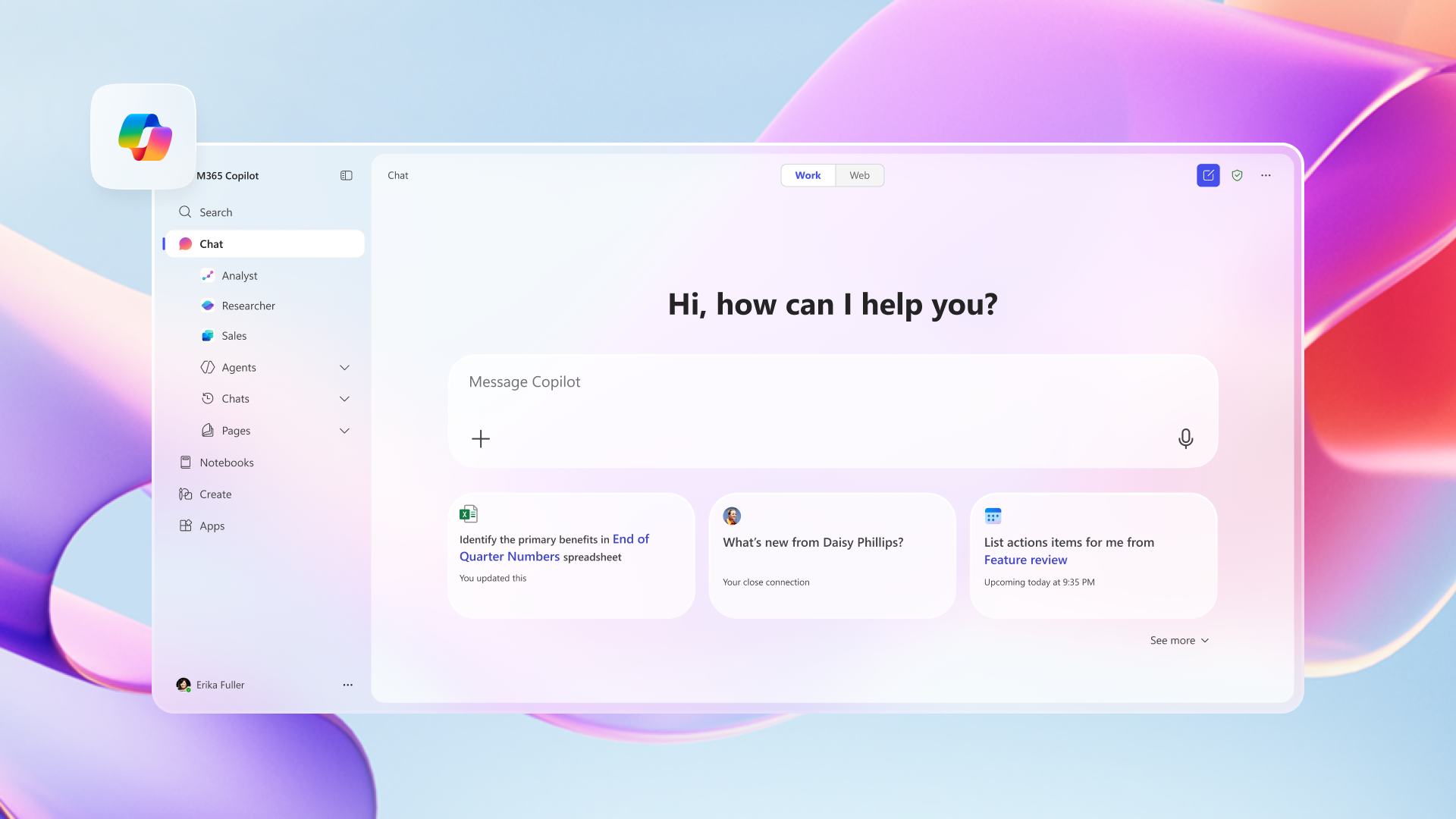
The new Microsoft 365 Copilot app isn’t your typical redesign. From the introduction of net new experiences like Agents to a fresh look and feel rooted in Chat-based interactions, we reinvented our hero experience from the ground up.
At its core, this reimagination sets the stage for a new era of intent-driven computing where systems begin mapping to how people think, feel, and act, rather than the other way around. It also both reflects and propels the dawn of human-AI collaboration at scale, where individuals become “agent bosses,” empowered to direct intelligent systems toward their goals with clarity and purpose.
Beyond empowering customers in new ways, it also marks a meaningful shift in how Design helps build AI-first experiences. As UX professionals move from creating interfaces to orchestrating coherence across complex and nondeterministic systems, we play a heightened role in turning clutter into clarity, fragmentation into flow, and intention into impact.

Shaping a digital workforce: research insights behind the experience
Before diving into the M365 Copilot experience itself, let’s start from where our design process always begins: a 30,000-foot view that considers the world we’re designing for. What do people need today? What will they need tomorrow? How can we create not just features, but futures?
The 2025 Microsoft Annual Work Trend Index (WTI) recently came out, which explores how AI is reshaping the workplace. Based on Microsoft 365 telemetry, LinkedIn hiring and labor trends, and insights from AI-native startups, economists, scientists and academics, the concept of “Frontier Firms” headlined this year’s report. As organizations leading the charge by blending human judgment with AI capabilities, they’re not just optimizing workflows—they’re reinventing them.
Apparent in our new M365 Copilot app is the next iteration of Fluent as a design system to support this professional shift. The future of work is less about static roles and more about dynamic goals and how you get things done, fueling a demand for unified, fluid experiences that foster collaboration between people and AI agents. As I wrote earlier in Design systems for the AI era, our systems must begin focusing more on verbs and action above static icons and move from passive UIs to adaptive systems. As controls become more intelligent, inputs more flexible, and outputs more personalized, we’re not just designing products but shaping a digital workforce. One where you are in the driver’s seat, conducting an orchestra of Copilot agents to make your ideas a reality.
Shaping a new UX: experiences that lead with human intent
For decades, design helped people grasp technology by translating computing complexity into something approachable and human. Metaphors like desktops, folders, and the cloud helped bridge the gap between abstract systems and everyday understanding. Today, technology is beginning to adapt to us, learning our behaviors, understanding our goals, and responding to our intent. The burden of translation is shifting, and systems will begin meeting us on our own terms—human terms.
The new Microsoft 365 Copilot app is built on a simple, powerful truth: conversation is core to how we understand and relate to the world. Long before we speak, we begin to absorb the cadence and emotion of language, even in the womb. That early exposure shapes how we connect, learn, and collaborate. Copilot Chat builds on this deep human foundation, anchoring the experience in natural, intuitive dialogue between people and AI. With Chat as the primary interface for work, people can initiate, navigate, and complete work within a single, language-driven environment, instead of jumping between siloed tools. It’s a paradigm shift from app-centric workflows to intention-centric ones and a turning point in how we interact with productivity tools.
Copilot’s dynamic windowing model further enhances the experience, paving the way for more adaptive interfaces. Users can move fluidly between their task and AI collaboration, whether it’s a side-by-side chat beside your Pages document or editing tools served up in the moment to refine an AI-generated image.
This isn’t about baking AI into interactions for the sake of it but considering where intelligence belongs and why. It’s about choosing the right agents for the right jobs and empowering people to drive the outcomes that matter to them, pushing productivity to new heights. By designing a UI that flexes with user intent, we’re setting the stage for a future where AI doesn’t just assist but collaborates, anticipates, and adapts in real time. With added memory and a growing agent platform supporting first- and third-party integrations, Microsoft 365 Copilot is evolving into a system that brings the right tools, context, and insights when and where they’re needed.
Visually and structurally, we also made deliberate decisions to support clarity and reduce cognitive load, something WTI showed to be a top concern. Microsoft 365 Copilot’s interface is built on an accordion-style architecture, with a collapsible navigation pane and a clean, minimal palette. In a world where constant interruptions define the modern workday, it brings calm and restores focus, creating space for what matters most.
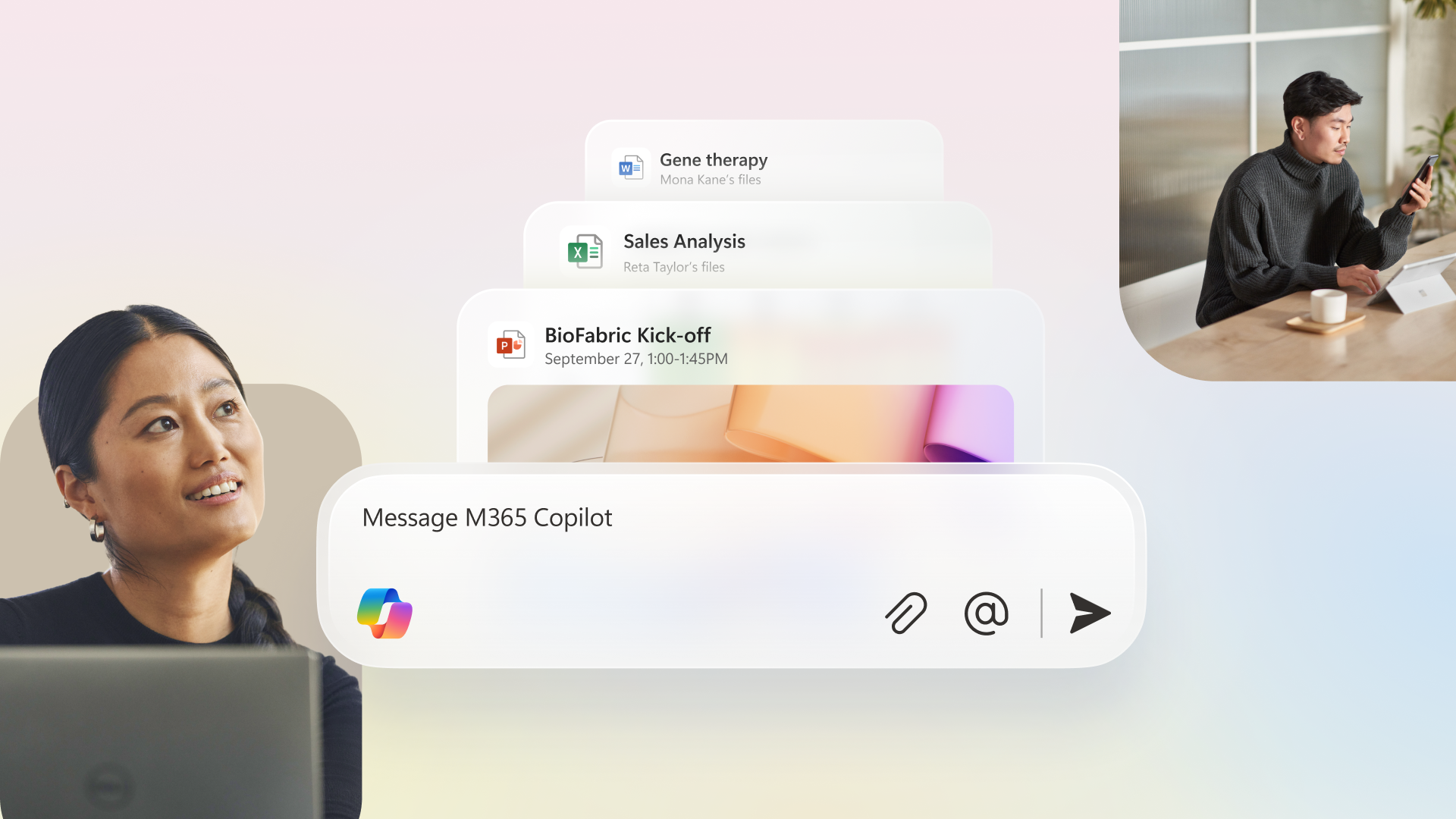
Shaping our discipline’s future: the editorial evolution of design
As generative AI reduces the cost of creation, the role of Design is shifting from making things to making sense of things. We’re no longer just builders. We are guides, bringing editorial clarity to increasingly complex workflows, especially in an AI-driven world where intelligence is no longer a limited asset but an on-demand resource.
Design has become a connective tissue across the Microsoft ecosystem, coordinating how AI agents operate across different contexts to deliver insight, continuity, and coherence. At the same time, because we are rooted deeply in lived experiences and user research, we bring an empathetic lens to our processes and decisions, championing important principles around accessibility, security and responsible AI.
These aren’t abstract ideals. They’re reflected in how Copilot is designed and shows up in the world. Through regular security audits, UX guidelines, documentation and resources, we ensured that all new libraries, prototypes and experiments were secure by default while we built the new app experience. We also tightly integrated our Responsible AI guidance across our UX themes for all platforms. Copilot also builds on Microsoft’s longstanding investments in inclusive design; features like speech-to-text, image captioning, and natural language input make it easier for people of all abilities to engage.
These choices aren’t just about functionality—they’re about trust, inclusion, and doing right by the people we design for.
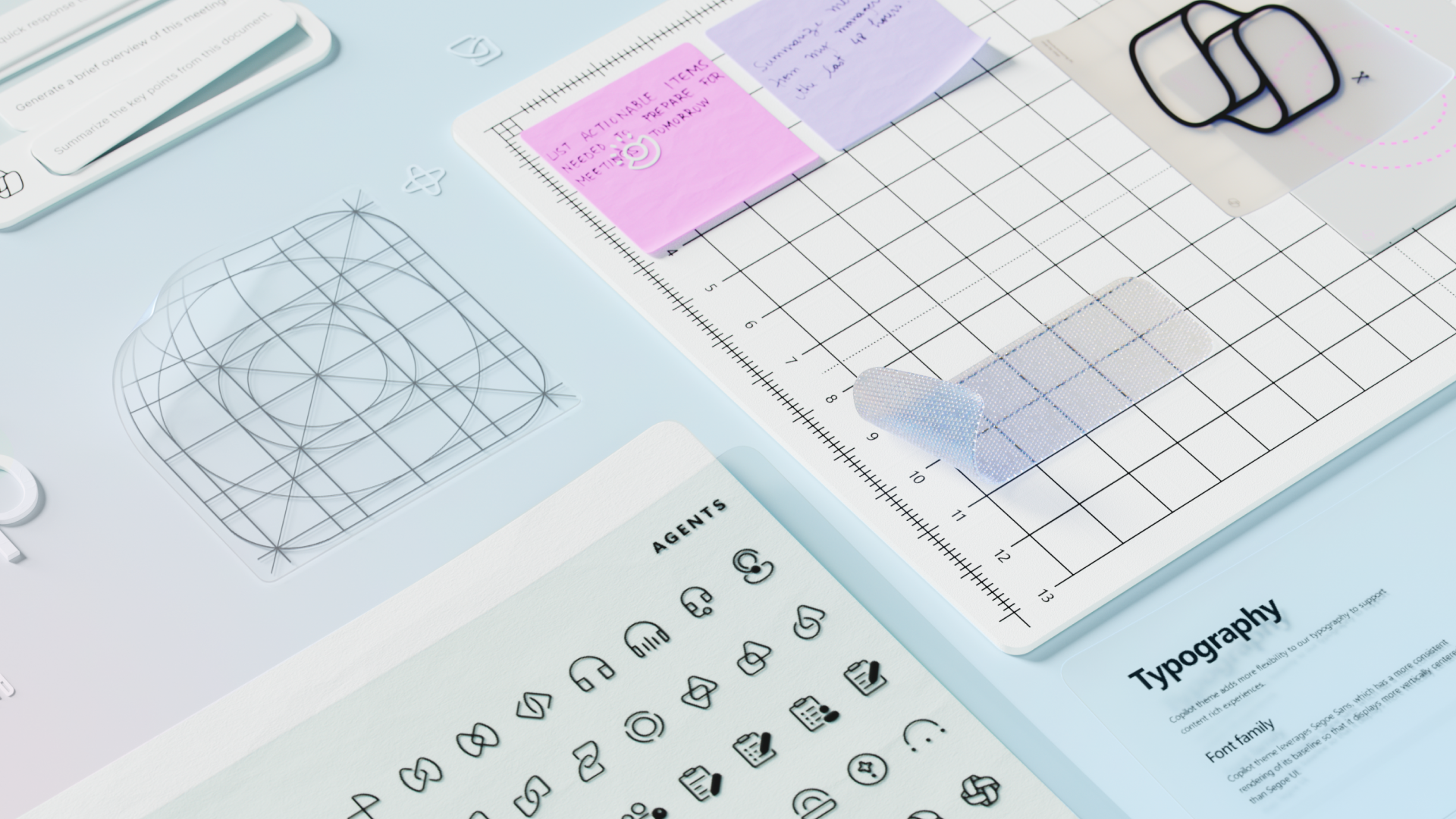
The future of computing is human
Bill Hill, a late Microsoft researcher and brilliant humanist, once said: “The most important operating system you’ll write applications for isn’t Windows or Mac or Linux; it’s Homo Sapiens 1.0. It shipped about 100,000 years ago. There’s no upgrade in sight, and it’s the one that runs everything.”
That insight has never mattered more. Today, we’re finally designing for that OS in earnest. Not by asking people to adapt to machines, but by creating technology that adapts to human rhythms in ways that are fluid, intuitive, and personal. As technology evolves in capabilities and presence, we’re responsible for shaping it around people’s needs, values, and dreams. It’s about rethinking the relationship between people and technology not in service of doing more for the sake of it, but in the spirit of reconnecting with and rediscovering the meaning behind our work.
While still an early step, this launch feels like the release of more than just another productivity tool, but a meaningful step toward a new paradigm for design and the people we design for. Check out the experience for yourself here—we’d love to know your thoughts.
Read more
To stay in the know with Microsoft Design, follow us on Twitter and Instagram, or join our Windows or Office Insider program. And if you are interested in working with us at Microsoft, head over to aka.ms/DesignCareers.
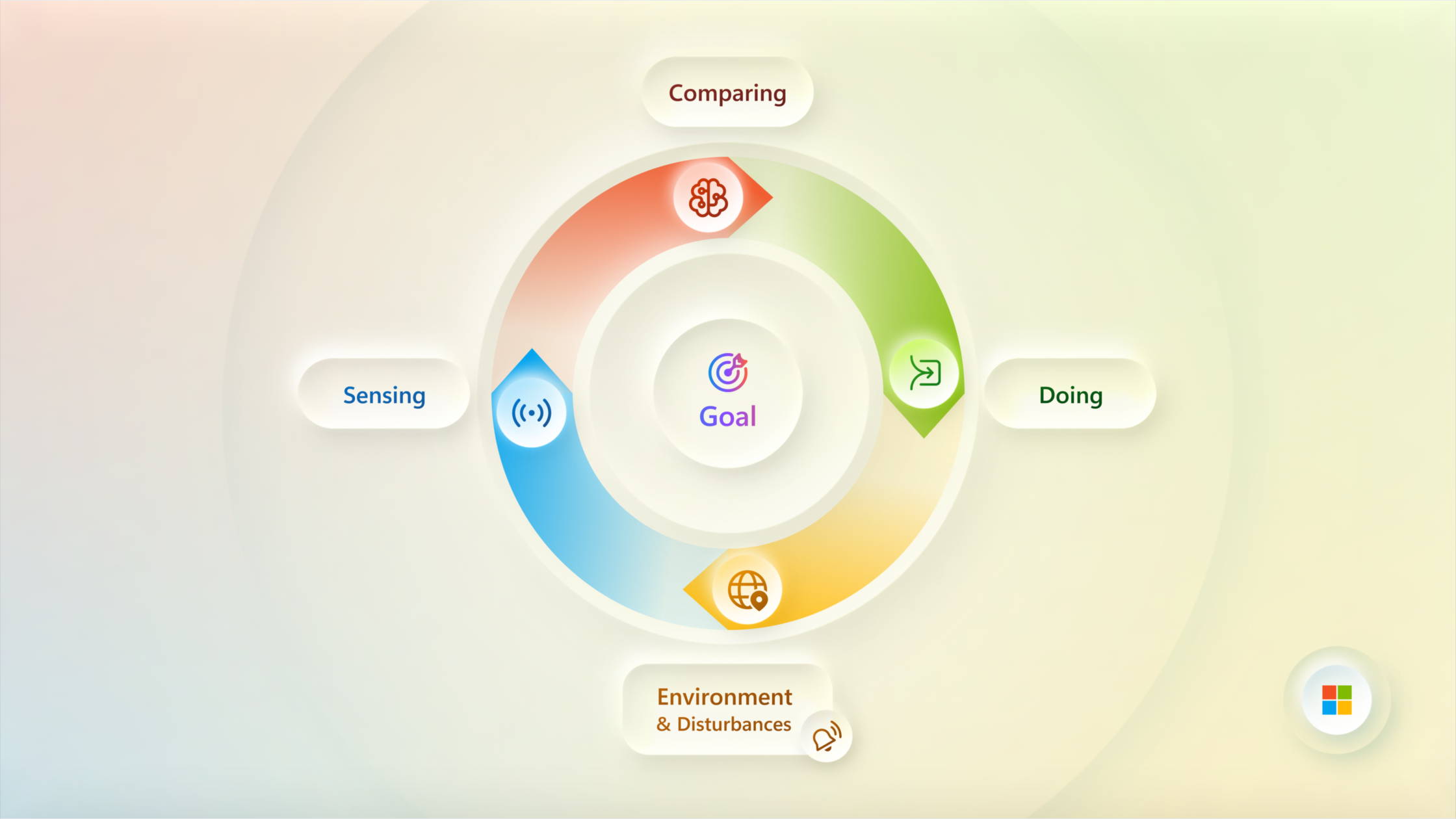
Designing loops, not paths
How cybernetic loops are helping us turn “human in the loop” from a catchphrase into a design practice
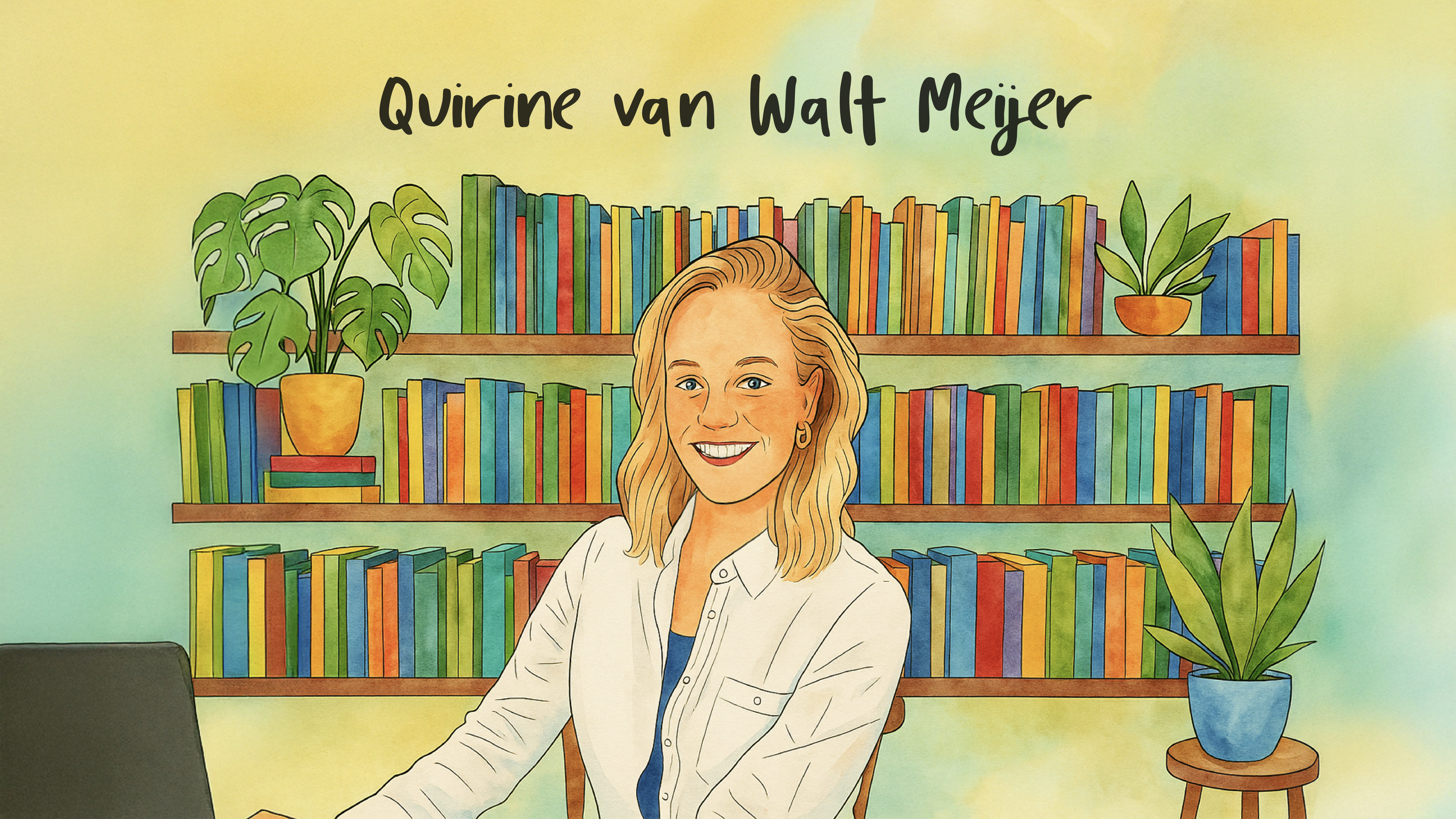
Vibe coding makes prototyping close to code, closer to users
Meet Quirine, a computational design manager exploring how AI reshapes the way her team builds and test ideas

Breaking the mold: Braz de Pina on the evolution of creativity and design in this AI era
Meet Braz De Pina, a Principal Product Designer for Microsoft’s Experience Collective Horizontal Design Studio
